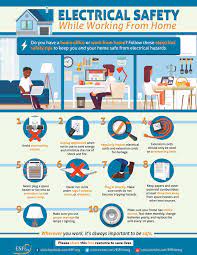Identifying and Preventing Home Safety Hazards
Our homes are supposed to be our safe havens, but they can also harbour hidden dangers that put our well-being at risk. Identifying and addressing home safety hazards is crucial to creating a secure environment for you and your loved ones. Let’s explore some common home safety hazards and how you can prevent them:
Tripping and Falling Hazards
Loose rugs, cluttered walkways, slippery floors, and uneven surfaces can all contribute to tripping and falling accidents. To prevent these hazards, make sure to keep floors clear of obstacles, secure rugs with non-slip pads, install handrails on stairs, and ensure adequate lighting in all areas of your home.
Fire Hazards
Electrical faults, unattended candles, overloaded power outlets, faulty appliances, and flammable materials pose significant fire hazards in homes. To reduce the risk of fires, regularly inspect electrical wiring, never leave cooking unattended, avoid overloading sockets, maintain smoke alarms, and have a fire escape plan in place.
Poisoning Risks
Household chemicals, medications, carbon monoxide from faulty heating systems or gas appliances, and lead-based paint are common sources of poisoning risks in homes. Keep hazardous substances out of reach of children and pets, store medications securely, install carbon monoxide detectors, and ensure proper ventilation in your home.
Drowning Hazards
Pools without proper fencing or supervision pose a significant drowning hazard for young children. Ensure that pools are securely fenced with self-closing gates, never leave children unattended near water bodies or bathtubs, and consider enrolling family members in swimming lessons for added safety.
Home Security Risks
Inadequate home security measures such as broken locks or windows can make your home vulnerable to intruders. Invest in sturdy locks on doors and windows, install security cameras or alarms for added protection, and practice good security habits like not sharing sensitive information online.
By being proactive in identifying potential home safety hazards and taking steps to address them promptly, you can create a safer living environment for yourself and your family. Remember that prevention is key when it comes to safeguarding your home against potential risks.
Five Essential Tips for Minimising Home Safety Hazards in Your Household
- Ensure smoke alarms are installed and regularly tested.
- Keep electrical cords and appliances away from water sources.
- Secure rugs and carpets to prevent slipping hazards.
- Store cleaning products and chemicals out of reach of children.
- Check for any signs of mold or dampness to prevent respiratory issues.
Ensure smoke alarms are installed and regularly tested.
It is essential to ensure that smoke alarms are installed and regularly tested in your home to enhance safety and early detection of potential fire hazards. Smoke alarms serve as a crucial early warning system that can alert you and your family to the presence of smoke or fire, giving you valuable time to evacuate and seek help. Regular testing of smoke alarms ensures that they are functioning correctly and ready to provide timely alerts in case of an emergency. By prioritising the installation and maintenance of smoke alarms, you are taking a proactive step towards safeguarding your home and loved ones from the devastating effects of fires.
Keep electrical cords and appliances away from water sources.
To ensure home safety, it is crucial to keep electrical cords and appliances away from water sources. Water and electricity are a dangerous combination that can lead to electric shocks or even fires. Make sure to avoid placing electrical devices near sinks, bathtubs, or wet areas to prevent any accidents. Always unplug appliances before cleaning or handling them near water sources to minimise the risk of electrical hazards in your home.
Secure rugs and carpets to prevent slipping hazards.
Securing rugs and carpets is a simple yet effective way to prevent slipping hazards in your home. Loose rugs can easily cause trips and falls, especially in high-traffic areas. By using non-slip pads or double-sided tape to keep rugs in place, you can create a safer environment for yourself and your family. Ensuring that rugs are securely anchored not only enhances the overall safety of your home but also provides peace of mind knowing that slipping accidents are significantly reduced.
Store cleaning products and chemicals out of reach of children.
It is crucial to store cleaning products and chemicals out of reach of children to prevent accidental poisoning and harm. Household cleaners often contain toxic ingredients that can be harmful if ingested or inhaled. By keeping these products in a high, locked cabinet or storage area, you can ensure that curious children do not have access to them. Always remember to read and follow the safety instructions on cleaning product labels and consider using childproof locks for added security. Taking these simple precautions can help keep your little ones safe from potential dangers lurking in your home.
Check for any signs of mold or dampness to prevent respiratory issues.
Checking for any signs of mold or dampness in your home is crucial in preventing respiratory issues. Mold and damp environments can trigger allergies, asthma, and other respiratory problems, especially in vulnerable individuals. By regularly inspecting areas prone to moisture build-up, such as bathrooms, kitchens, basements, and attics, you can address any mold or dampness promptly. Proper ventilation, fixing leaks, and maintaining optimal humidity levels are key steps to safeguarding your home and promoting better respiratory health for you and your family.

